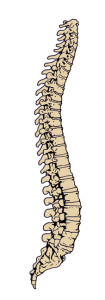The Spine Lengthens In Two Directions
As your spine goes you go.
This is one of my favorite phrases and sums up our prospects for aging in six words.
Energetically, life revolves around the spine.
Our nervous system is the body’s information gatherer, storage center, and control system.
Its function is to collect information about external conditions in relation to the body’s internal state. It then analyzes this information and initiates the proper response.
The Central Nervous System (CNS) includes the brain and spinal cord, which are housed inside the spinal column.
The Peripheral Nervous System (PNS) connects the CNS to other parts of the body and is composed of nerves that emanate from the spinal column.
The skeletal alignment of our spine is the key determinant of our access to the body’s energetic resources.
- To unlock this energy we must balance the curves of the spine and lengthen them in two directions:
- The sacrum and tailbone move down
- The lumbar spine and everything above extend up.
We want to learn to lengthen the spine while maintaining all of its natural curves in order to achieve its maximum length.
In order to visualize a healthy lengthening of the spine, we need to understand the muscles that are involved in this action.
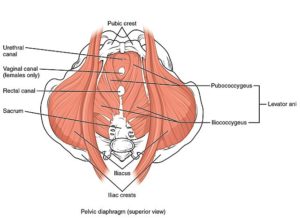
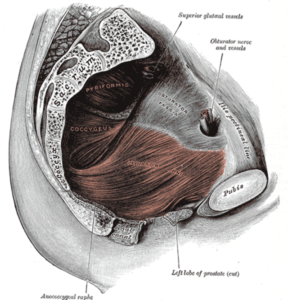
Your pelvic floor is a group of muscles called the levator ani, the elevator of the anus.
Energetically this muscle moves upward into the core of the body.
Your buttocks muscle, the big gluteus maximus, is a muscle that wraps down the leg to extend it.
Energetically it flows down to the earth.
These muscles (levator ani & gluteus maximus) have specific functions that work in opposition to each other.
Unfortunately, this is rarely the environment in which we live. We tend to use both muscle groups poorly.
This is because we tend to overuse the buttocks and underuse the pelvic floor.
As a result, the spine can begin to suffer.
Don’t grip your butt!
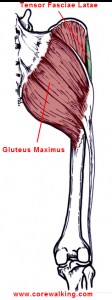 Overuse of the buttocks, or gluteal muscles, tends to shut down energetic movement through the spine.
Overuse of the buttocks, or gluteal muscles, tends to shut down energetic movement through the spine.
In standing the gluteus maximus should not be working much.
In walking it works a tiny bit to take the leg back unless you are walking uphill which is when it kicks into gear.
Unfortunately, our posture usually shifts the gluteus maximus into a different role.
If your legs are underneath your pelvis the butt can do less. And your spine can do more.
If the thighs begin to sink forward and the pelvis tucks under, as they do in most people, the quadriceps (big thigh muscles) and the buttocks begin to work to provide stability.
This false sense of stability results in the butt gripping and its energy moving upwards.
Releasing the buttocks opens the possibility for one of the body’s most important features: toning the tail.
Toning your pelvic floor creates the upward energy that allows for the sacrum and the tail bone to move down.
If the idea of toning your pelvic floor doesn’t make sense you can try to feel it in many ways.
Holding in your pee. Gently engaging between the anus and the genitals. And lastly, if all else falls squeeze the anus to get a sense of movement at the base of the pelvis.
Ideally, you will feel a shift in the bones as well as the muscles.
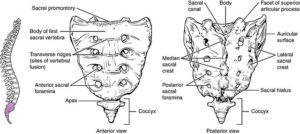
Your coccyx (tail) bone at the very base of the spine should move forward ever so slightly towards the pubis or front of the pelvis as the sacrum lengthens down.
To lengthen your spine up you can engage a gentle tone in the abdominals and lengthen up from the back of the neck.
This pulls the spine up into its full extension at the top.
The most interesting aspect of this to me is that though the spine is moving in two directions to find its length, the muscular action is all about lifting or lengthening up.
When the pelvic floor tones, the sacrum, and tail bone move down.
If the legs are under the hips correctly the spine can lengthen up with the help of the erector spinae muscles in the back.
When our alignment is off so is the lengthening of our spine.
To be able to get full length and extension in our spine is one of the key aspects of aging successfully.
When the relationship between the buttocks and the pelvic floor is not harmonious the spine will only lengthen in one direction.

